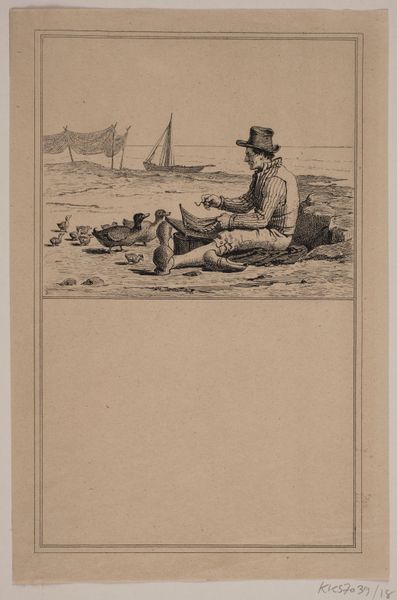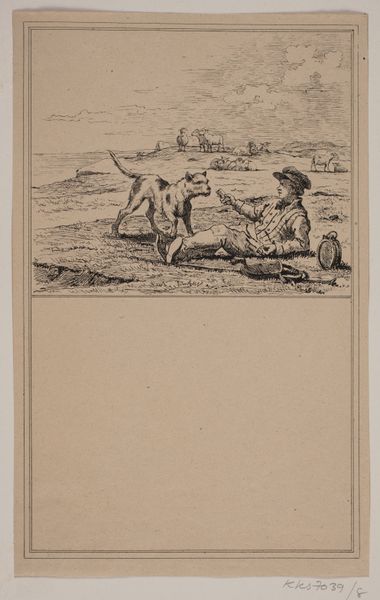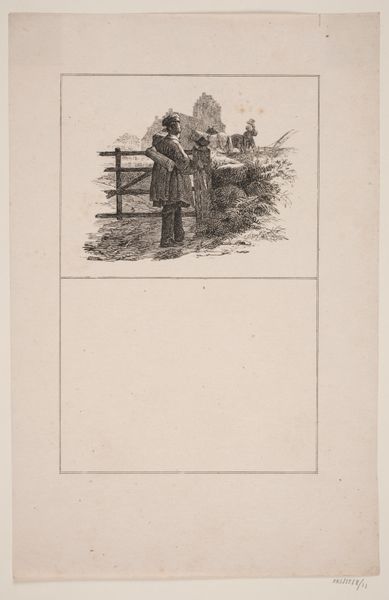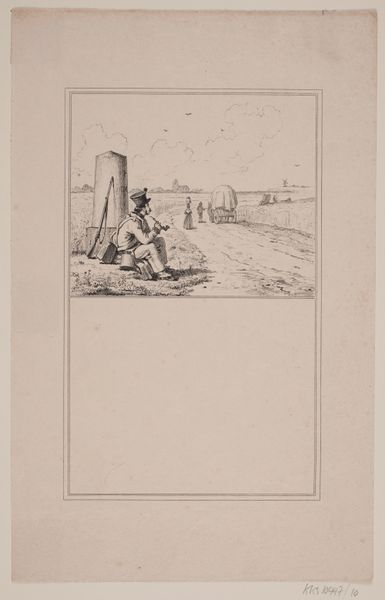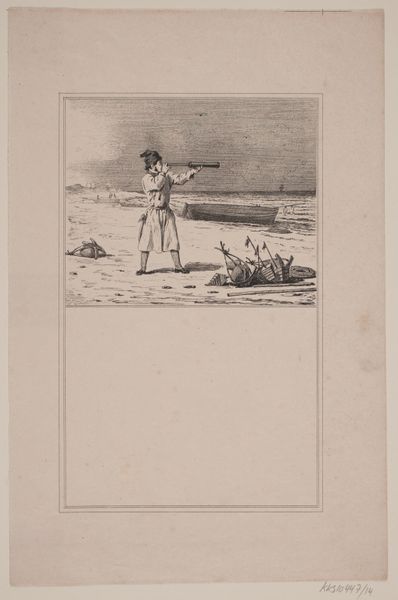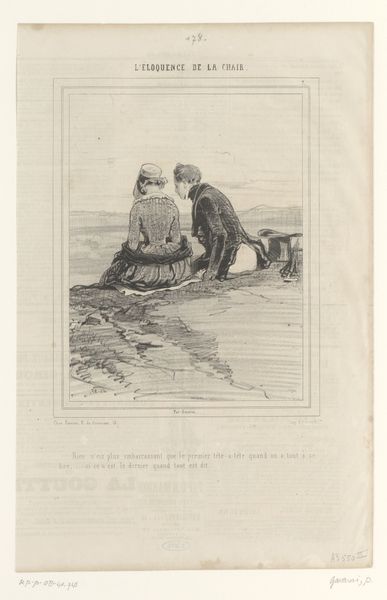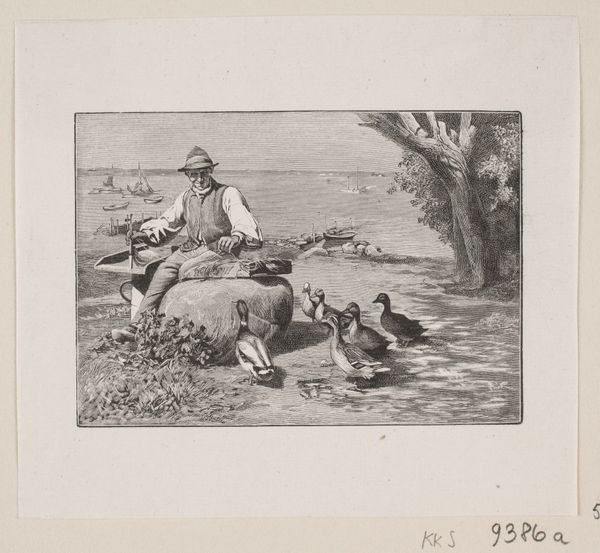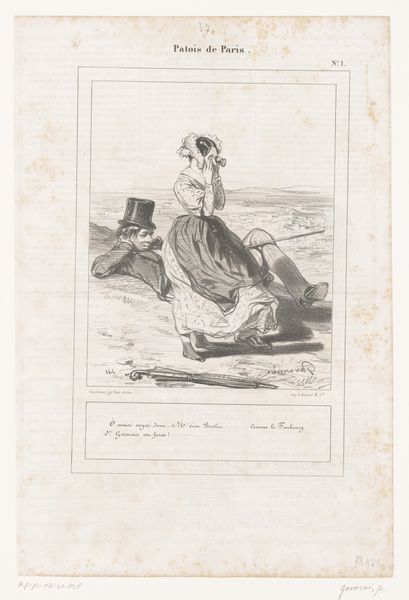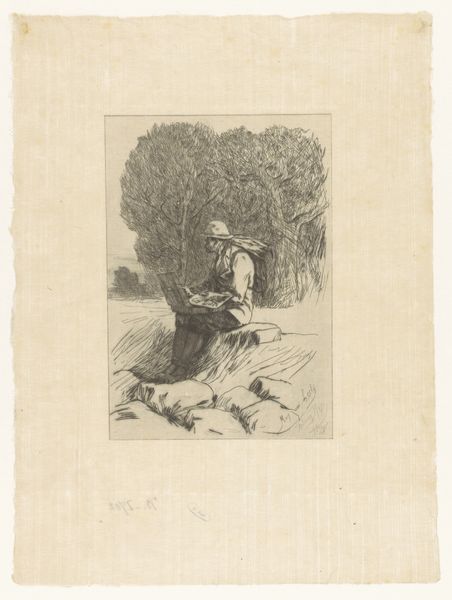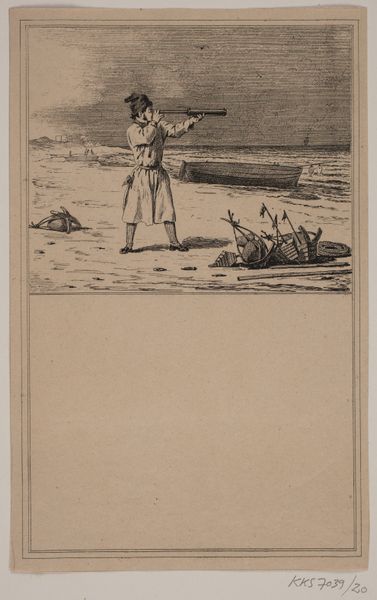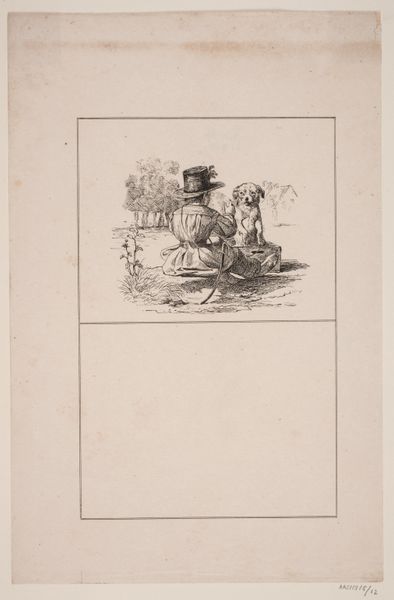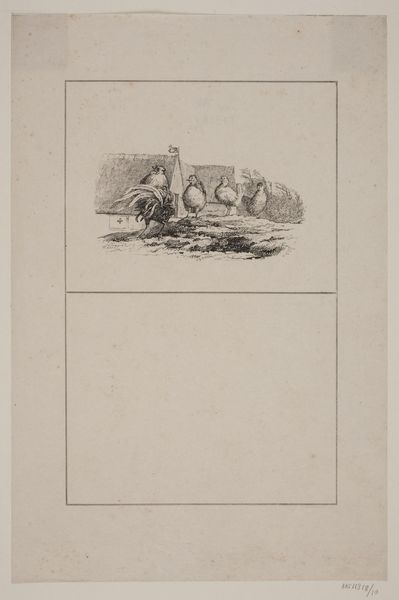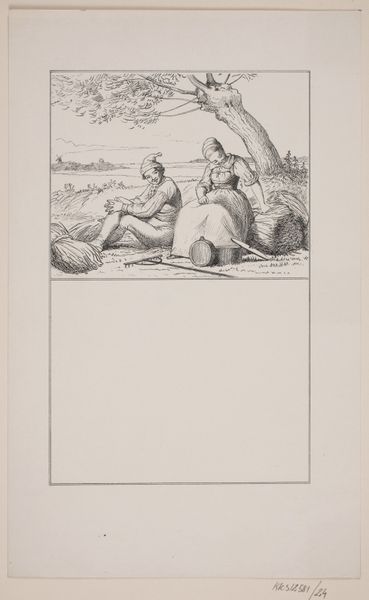
Fiskeren og anden. Prøvetryk til Chr. Winther og M. Rørbye, "25 Billeder for små børn" 1846
0:00
0:00
drawing, lithograph, print
#
portrait
#
drawing
#
lithograph
# print
#
landscape
#
realism
Dimensions: 270 mm (height) x 175 mm (width) (brutto)
Curator: This is Adolph Kittendorff’s "Fiskeren og anden. Prøvetryk til Chr. Winther og M. Rørbye, \"25 Billeder for små børn," a lithograph from 1846. It seems to be a preparatory print intended for a children's book illustration. Editor: The first thing that strikes me is its quiet intimacy. There's a distinct contrast between the very detailed foreground and the minimal background seascape with boat and fishing nets. Curator: Precisely. Look closely at the way the lithographic process captures the textures, particularly in the fisherman's clothing and the detailed rendering of the ducks. The availability of these affordable prints made art accessible to a broader public, thus reflecting broader changes to artistic production and reception that marked the Biedermeier period. Editor: I agree, but I’m more drawn to how the artist balances light and shadow. Note the fine lines create soft gradations of light on the ducks' feathers, contrasted with the almost silhouetted fisherman and the crisp clarity of the distant sailboat. Curator: It’s interesting to consider the role of labor. The fisherman is clearly a working-class individual, taking a moment to enjoy the company of these fowl. And also, what type of work is implied? Are they about to be dinner or are they companions? The composition hints at social realities of 19th-century Denmark. Editor: The pipe acts as the focal point for that foreground composition, creating a quiet moment in an intimate human-animal connection. I’m drawn to that sense of gentle communion more than socio-economic issues. Curator: And yet, it is precisely the materials and techniques of mass reproduction that permit this scene to proliferate in Danish homes, offering subtle narratives and visual aesthetics to many. How else were working-class families meant to be addressed? Editor: A strong point about wider access! Though I maintain the artistry—the use of lines to capture texture and light—speaks volumes about its intrinsic aesthetic merit. Curator: By contextualizing its production and distribution, we appreciate Kittendorff’s craft and intentions. It enriches our perception of the piece. Editor: Well said! Considering it with attention to these formal elements provides an immersive look at a world nearly two centuries removed.
Comments
No comments
Be the first to comment and join the conversation on the ultimate creative platform.
